
What is the difference between a traditional trademark and trade dress protection?
- Traditional Trademarks
According to the USPTO - A trademark can be any word, phrase, symbol, design, or a combination of these things that identifies your goods or services. It’s how customers recognize you in the marketplace and distinguish you from your competitors.
The word “trademark” can refer to both trademarks and service marks. A trademark is used for goods (ex. Nike swoosh), while a service mark is used for services (ex a law firm logo or brand name – ex. Vondran Legal®).
- Trade Dress
Trade dress is a type of a trademark and is basically an extension of trademark law which can provide legal protection for product shapes/configurations and product packaging/labeling which is both (a) distinctive and (b) non-functional.
- Result
So, trademark law protects both traditional trademarks, and also items that qualify for trade dress protection, but either way, it is a form of nationwide rights that allows you to safely invest in your products and brand and enjoin “copycats” who try to trade off your brand and counterfeiters. The trademark or trade dress Plaintiff can enjoin such conduct and seek to recover any damages.
TRADEMARK MANUAL OF EXAMINING PROCEDURE (“TMEP” from USPTO)
Here is the definition of trade dress provided in the TMEP:
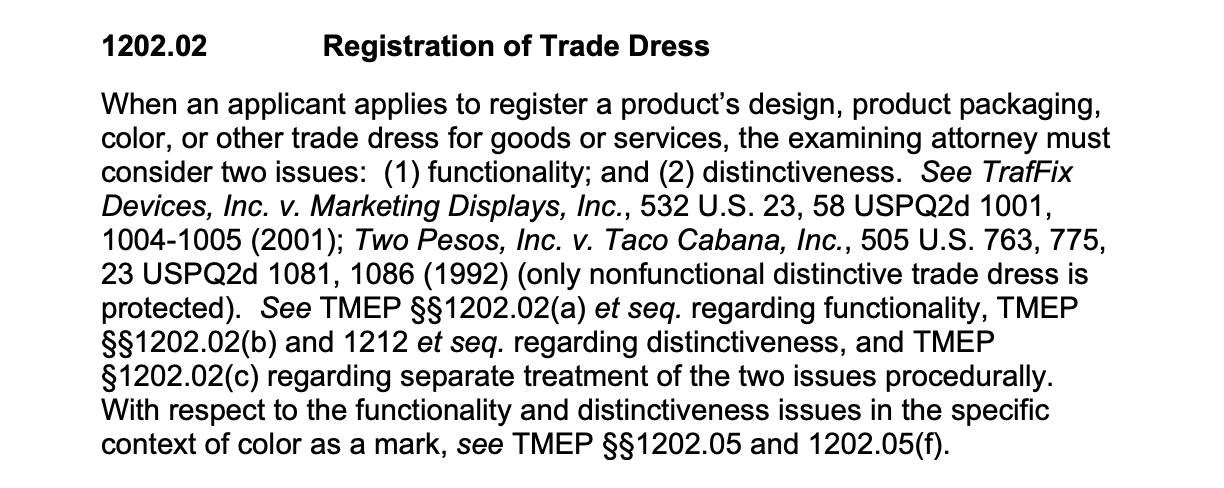
Let’s look at these two requirements.
- Trade Dress cannot be “Functional” - 1202.02(a)(iii)(A)
Per TMEP:
“Functional matter cannot be protected as trade dress or a trademark. 15 U.S.C. §§1052(e)(5) and (f), 1091(c), 1064(3), and 1115(b).
A feature is functional as a matter of law if it is “essential to the use or purpose of the product or if it affects the cost or quality of the product.” See TrafFix Devices, Inc. v. Marketing Displays, Inc., 532 U.S. 23, 58 USPQ2d 1001, 1006 (2001); and Qualitex Co. v. Jacobson Products Co., Inc., 514 U.S. 159, 165, 34 USPQ2d 1161, 1163-64 (1995).”
If a product design or packaging is “functional” it cannot be registered on either the principle register or the supplemental register, even if it is inherently distinctive. There is an “absolute bar.” Thus, it is important to understand what might be deemed functional under the law.
In the case of In re Morton-Norwich Products, Inc., 671 F.2d 1332, 213 U.S.P.Q. 9 (C.C.P.A. 1982), the court discussed four considerations to be reviewed when making a functionality determination (commonly known as the “Morton-Norwich factors:”):
- The existence of a utility patent that reveals the utilitarian advantages of the subject design; (if the applicant has a utility patent, the examiner will ask for these materials and see if what is being requested for trade dress protection relates to utilitarian features set forth in the patent application). If it is similar, that can lead to a “functionality refusal.”
- Applicant’s advertising that touts the utilitarian advantages of the subject design; (if an applicants advertising shows that they tout that their product shape or configuration provides advantages this can lead to a finding of functionality). Ex. the Gibson Guitar case advertising materials showed the shape of their guitar gave competitive sound advantages (functionality refusal).
- Evidence presented pertaining to the availability of alternate designs; (an applicant merely stating that there are still “many different alternatives available to a competitor is not decisive. If it is functional it will be refused). Ex. applicant sought protection for the color black for outboard motors. Obviously, there are other alternative colors, but this puts competitors at a significant non-reputational disadvantage.
And,
- Evidence presented that demonstrates whether the design results from a comparatively simple or inexpensive method of manufacture. (for example, if a product is advertised as “this design makes it easier and less expensive to install…” this could lead to a functionality refusal).
So, in short, functionality will be looked at very closely. The applicant will need to submit their specimens, sample advertising and proof of patents to the USPTO examiner. If they issue a refusal, the burden shifts to the applicant to provide sufficient evident to rebut.
- Trade Dress must be “Distinctive” - 1202.02(b)
The second requirement a trade dress applicant must show (assuming the product/packaging/configuration is NOT functional) is that the item has distinctiveness.
An applicant can satisfy this prerequisite by proving either that the trademark is:
(a) inherently distinctive
or
(b) that it has acquired secondary meaning (with regard to the total appearance of the product and not just individual features).
I. Analyzing product DESIGN trade secrets (these can never be inherently distinctive)
When evaluating product design trade dress the applicant must be able to establish that the mark has acquired distinctiveness under section 2(f) so that the product design functions as a trademark and has secondary meaning in the minds of the consumer, and if so, this can be registered on the principle register.
The USPTO website provides insight on how acquired distinctiveness can be shown:
“You may submit actual evidence that the applied-for mark has acquired distinctiveness under Section 2(f) in connection with applicant's goods. In other words, because of the extensive use and promotion of the mark, consumers now directly associate the mark with the applicant as the source of those goods.
Note: Long-term use alone is generally not sufficient to show acquired distinctiveness for marks that are merely ornamental.
Acceptable evidence of use and promotion can include:
(a) advertising and promotional materials that specifically show or promote the applied-for mark in use as a trademark and source-identifier;
(b) dollar figures for advertising devoted to such promotion;
(c) dealer and consumer statements indicating recognition of the applied-for mark as a trademark;
(d) other evidence that shows consumer recognition of the applied-for mark as a trademark for applicant's goods.”
II. Analyzing product PACKAGING trade secrets
When evaluating product packaging trade dress (which is not the same for product design trade dress discussed above) the USPTO examiner will determine if the proposed mark is inherently distinctive and will look at various factors (known as the “Seabrook Factors”).
According to TEMP:
“[A] mark is inherently distinctive if ‘[its] intrinsic nature serves to identify a particular source.’” Id. at 210, 54 USPQ2d at 1068 (citing Two Pesos, Inc. v. Taco Cabana, Inc., 505 U.S. 763, 768, 23 USPQ2d 1081 (1992)). The test for determining inherent distinctiveness set forth in Seabrook Foods, Inc. v. Bar-Well Foods, Ltd., 568 F.2d 1342, 1344, 196 USPQ 289, 291 (C.C.P.A. 1977), although not applicable to product design trade dress, is still viable in the examination of product packaging trade dress.
These inherent distinctiveness factors include:
- Is it a common shape or design (ex. candle packaging not unique);
- Is it unique in the field in which it is used;
- Is it a mere refinement of a well-known form of ornamentation (ex. novel lights in a bowling alley was not inherently distinctive indicating source) and whether the packaging is,
- Capable of creating a commercial impression apart from the words or text.
Here are a few examples provided by USPTO:
- In re Fre-Mar Industries, Inc., 158 USPQ 364, 367 (TTAB 1968) (“[A]lthough the particular shape is a commonplace one for flashlights, it is nevertheless so unique and arbitrary as a container in the tire repair field that it may be inherently distinctive and, therefore, by reason of its shape alone, serve to identify applicant’s goods and distinguish them from like goods of others.”);

- In re World’s Finest Chocolate, Inc., 474 F.2d 1012, 177 USPQ 205 (C.C.P.A. 1973) (package design found to identify applicant’s candy bars and distinguish them from those of others was sufficient. You may recognize this as candy bars your kids sell to raise money.)

- Ex parte Haig & Haig Ltd., 118 USPQ 229, 230 (Comm’r Pats. 1958) (“The decree recited that because of the original, distinctive and peculiar appearance of the ‘Pinched Decanter’ the brand of whiskey in such bottles had come to be known and recognized by the public, by dealers and by consumers; and that the whiskey contained in such bottles had come to be identified with the ‘Pinched Decanter’ in the minds of the public generally.”)

If the product packaging trade dress is not inherently distinctive, the applicant can still acquire trademark protection by showing secondary meaning in the minds of the consumer.
To establish secondary meaning, an applicant must prove that in the minds of the public, the primary meaning of a product feature is to identify the source of the product rather than the product itself.
In other words, it must be shown that consumers associate the trade dress with the company that creates it. The following factors will be considered for secondary meaning:
(1) length of use;
(2) sales success;
(3) amount spent on advertising;
(4) survey evidence;
and
(5) unsolicited media coverage.
Applicants face a substantial burden in demonstrating distinctiveness and this can require a lot of investment to prove the secondary meaning in the minds of the consumers (for example, by commissioning a relevant survey and spending enough money and time on marketing and advertising that consumers will make the association as to the source of the goods or service).
If either of these two elements can be established, the applicant can file for trade dress protection with the United States Patent and Trademark Office.
More examples of popular brands using Trade Dress to their advantage
1. Coca-Cola bottle: The unique shape of the Coca-Cola bottle is a great example of trade dress protection. The contour bottle design is distinctive and instantly recognizable that the product comes from Coca-Cola. Thus, with trademark protection, competitors cannot copy this design with similar competing bottles.
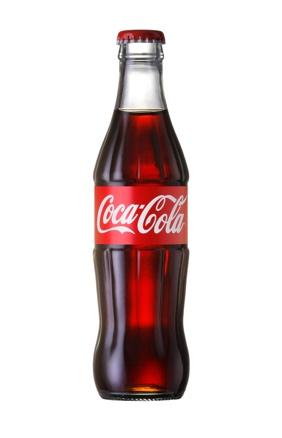
2. Tiffany Blue: The unique shade of blue used by Tiffany & Co., a luxury brand, is another example of protected trade dress as to a COLOR. Tiffany now has exclusive rights to use this specific color on their packaging and branding and to enjoin copycats.
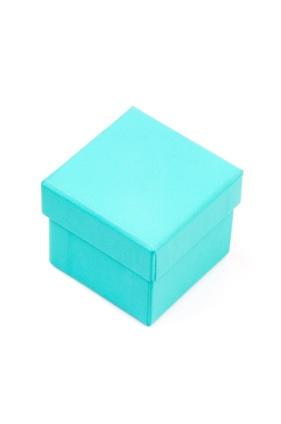
3. Louboutin Red Sole: Christian Louboutin, a French luxury shoe designer, has obtained trade dress protection for the red sole on their luxury women’s footwear. This distinctive feature allows them to prevent unauthorized counterfeit imports or copycats from unauthorized use by competitors.
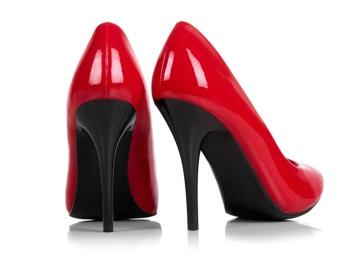
4. Hershey's Chocolate Bar: The design of Hershey's chocolate bar has trade dress protection, ensuring that competitors cannot use a similar layout, font, or design on their chocolate bars that may confuse consumers and dilute the distinctiveness of the Hershey's brand.
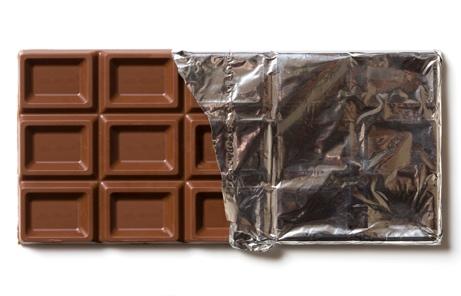
5. Apple's interior store design is protected as trade dress (so is KFC)

Description of Mark per USPTO
The mark consists of the design and layout of a retail store. The store features a clear glass storefront surrounded by a paneled facade consisting of large, rectangular horizontal panels over the top of the glass front, and two narrower panels stacked on either side of the storefront. Within the store, rectangular recessed lighting units traverse the length of the store's ceiling. There are cantilevered shelves below recessed display spaces along the side walls, and rectangular tables arranged in a line in the middle of the store parallel to the walls and extending from the storefront to the back of the store.
There is multi-tiered shelving along the side walls, and a oblong table with stools located at the back of the store, set below video screens flush mounted on the back wall. The walls, floors, lighting, and other fixtures appear in dotted lines and are not claimed as individual features of the mark; however, the placement of the various items are considered to be part of the overall mark.
6. John Deer Green and Yellow - Deere has registered trademarks for its green and yellow color scheme for use on tractors and various agricultural equipment.

7. Apple iPhone product design

8. Shape of Navy Chair by Emeco Industries (sold since 1978 qualified for trade dress protection)
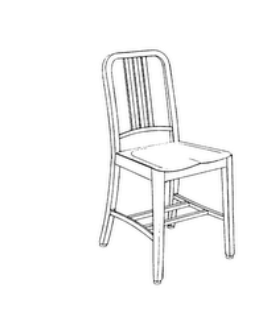
These are but a few examples.
Benefits of trade dress protection
Trade dress protection can be helpful to a company for many reasons:
- It helps identify the source of your goods or services (branding).
- Provides legal protection for your brand to prevent copycats and counterfeits.
- Helpful for advertising and to promote reputation/goodwill.
- Prevent others from registering similar designs before you.
- Add to your IP portfolio (build company value for future sale)
- When you go on Shark Tank and they ask: “do you have any IP or I can squash you like a cockroach” you can say, “Why yes MR. WONDERFUL, we have all sorts of intellectual property including copyright, utility patent, trade dress and trademark protection, are you sitting on the sidelines again or ready to jump in with an offer?”
How to apply for trade dress protection
1. Visit the USPTO website to start a new registration.
2. You will need to provide information including descriptions, samples and specimens for your proposed mark.
3. You will need to set forth who will own the mark.
3. Be prepared to providence evidence that your product design or packaging is non-functional.
4. Be prepared to provide evidence to establish distinctiveness and/or secondary meaning.
5. A trademark examiner will be assigned to review the case.
6. If there are objections this will come in the form of an “office action letter.
7. If no objections, and you meet the requirements the mark will be published for opposition.
8. If no opposition, a Certificate of Registration will issue for either the primary or supplemental register to the applicant.
How long does federal trade dress protection last?
10 years and they can be renewed for another 10 years and into perpetuity as long as the mark is used in commerce. You can usually secure this protection for less than a $1,000 or more if you use legal counsel, which is highly suggested.
What are the Remedies for Trade Dress Infringement and Dilution?
The remedies are the same as those for regular trademark infringement:
- Injunctions - 15 U.S.C. §1116.
- Recovery/disgorgement of the Defendant’s profits - See Clearline Techs. Ltd. v. Cooper B-Line, Inc., 948 F. Supp. 2d 691, 706 (S.D. Tex. 2013).
- Actual losses suffered by Plaintiff including lost profits, and lost goodwill - Experience Hendrix L.L.C. v. Hendrixlicensing.com Ltd, 762 F.3d 829, 844-45 (9th Cir. 2014).
- Treble damages - (in the court’s discretion for “willful infringement”).
- Reasonable royalties that would have been paid by the defendant to use the trade dress - Sands, Taylor & Wood v. Quaker Oats Co., 34 F.3d 1340, 1350 (7th Cir. 1994).
- Costs of corrective advertising to counteract consumer confusion due to infringement - Big O Tire Dealers, Inc. v. Goodyear Tire & Rubber Co., 561 F.2d 1365, 1374 (10th Cir. 1977).
- Attorney’s fees in “exceptional cases” - Taco Cabana Intern., Inc. v. Two Pesos, Inc., 932 F.2d 1113; 15 U.S.C. § 1117(a).
- Costs - Tacori Enterprises v. Beverlly Jewellery Co., No. CV 0605170 GAFRCX, 2009 WL 10669482, at *10 (C.D. Cal. Feb. 10, 2009.
- Destruction of infringing articles - 15 U.S.C. §§1114-1119.